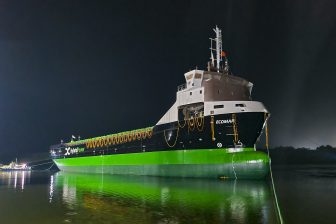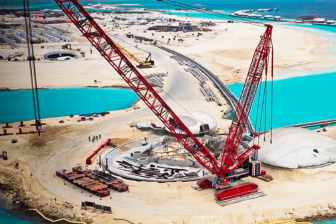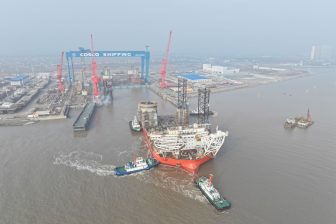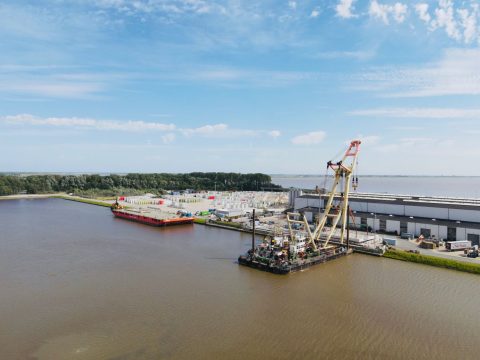
First concrete parts for Wilhelmshaven LNG project loaded
A cooperation between a number of parties in the German port of Emden has enabled the load-out of first concrete parts for the Wilhelmshaven LNG terminal being developed by Uniper.
ems ports agency & stevedoring beteiligungs (epas) took part in the operation arranging the access for the supporting vessels, the 600-ton floating crane Enak and the heavy lift barge, coordinating their stay at the port of Emden. The load-out was completed at the Bettels Betonbau facility in Emden.
At the start of last month, Uniper said that the construction work for Germany’s first LNG terminal and for the onshore and seaward port infrastructure could begin as the State Trade Supervisory Authority Oldenburg has given its approval for an early start.
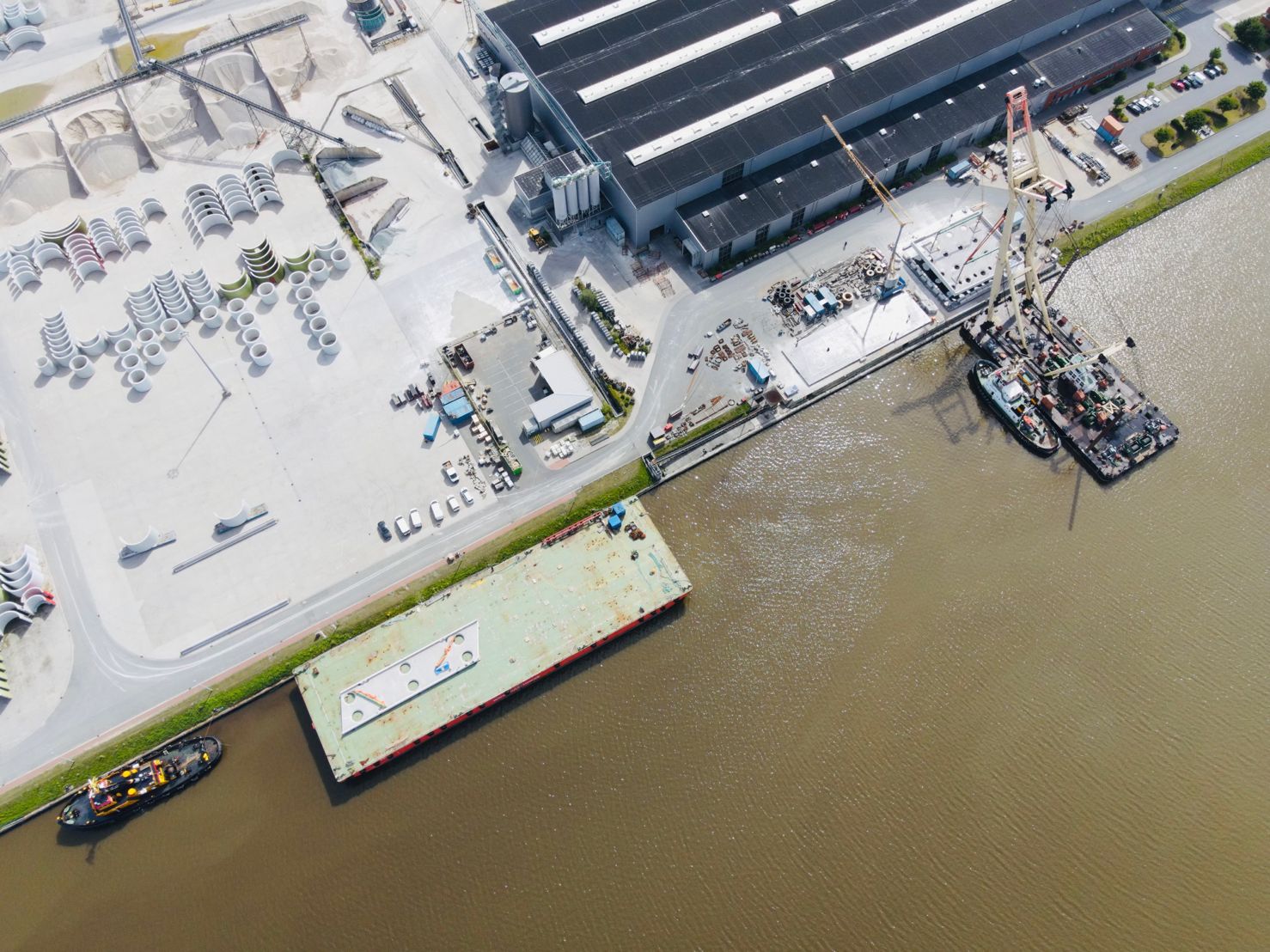
The official start of construction of the FSRU-based LNG terminal is July 4, 2022. Up to 7.5 billion cubic meters of natural gas per year are to be handled via this terminal as quickly as possible. This is about 8.5 percent of Germany’s current gas demand per year. The German Federal Ministry for Economic Affairs and Climate Protection and Uniper are aiming for commissioning in winter 2022/2023.
“We are very pleased that things are now visibly getting underway,” says Lower Saxony’s Minister for the Environment, Energy, Building and Climate Protection Olaf Lies. “We need a replacement for Russian gas as quickly as possible, and we in the north are prepared to take responsibility for this. Every cubic meter we save will help us get through the next winter, and every cubic meter we import to Germany via alternative routes in the future will help us free ourselves more quickly from Russia’s grip.”
Uniper had submitted the application for the required permit and for admission of an early start under the German Federal Immission Control Act (BImSchG) to the Oldenburg State Trade Inspectorate at the beginning of June.
The first import terminal for LNG in Germany will be built in Wilhelmshaven at the Voslapper Groden transhipment facility. In a second project step, a permanent and expanded port solution for the FSRU is to be realised in parallel to the existing UVG. Here, it is planned to create additional unloading and handling facilities for green gases, e.g. ammonia, in order to be able to utilise the full potential of this new infrastructure project in Wilhelmshaven.
The Wilhelmshaven site offers ideal conditions from both a maritime and logistical perspective. LNG tankers of all sizes will be able to call at the facility regardless of the tides and in line with the highest international safety standards. All that is required for the connection to the existing natural gas pipeline network is a gas pipeline around 30 kilometres long, the realisation of which has already been started by OGE.


